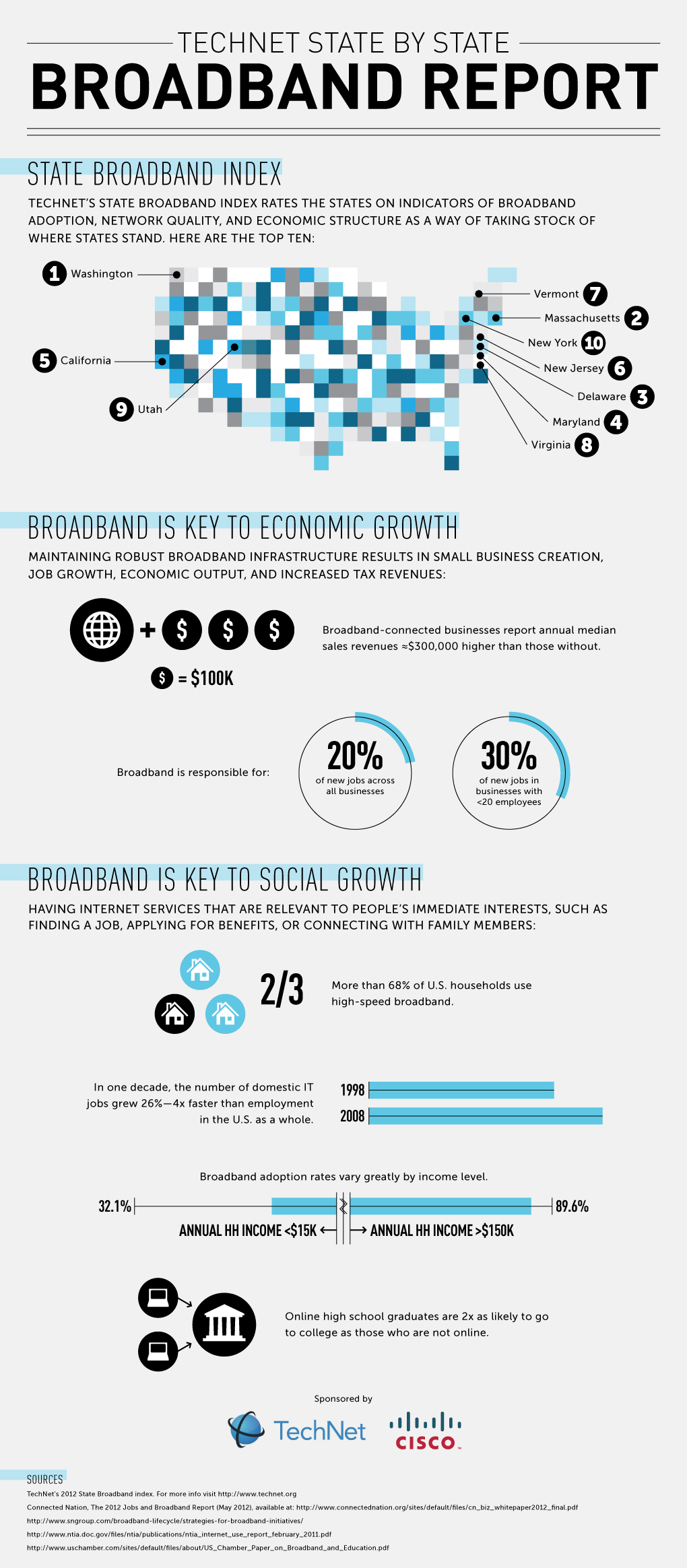
Imagine a future where every classroom in America has a high-speed connection to the internet, where students have the entire catalog of books and videos at their fingertips. A future where access to the highest quality health care isn't bound by the community in which you live. And where government services are available with no fuss online.
That day is just around the corner. Yet, getting there requires blazing fast broadband in every community, in every state of the nation.
The good news is that states are making major progress toward that goal. That's the finding of a new study released yesterday by TechNet, in partnership with Cisco. The 2012 State Broadband Index ranks all 50 U.S. states on indicators of broadband adoption, network quality and economic structure. The top five leaders are Washington state, Massachusetts, Delaware, Maryland, and my home state of California.
Congratulations to the bold leaders who have shown the vision to connect more people to high-speed broadband.
Why is this so important? Simply put, broadband boosts economic growth, driving job creation and innovation. High-speed broadband opens doors, expands educational opportunities, and improves public safety and health care. It gives small businesses in rural areas a pathway to participation in the global economy and the framework for long-term economic stability.
Two examples: Broadband-connected businesses report $300,000 more in revenues on average than those without. Children online are two times more likely to go to college than those not connected. As more connections are made, quality broadband becomes simply indispensable.
The report unveiled yesterday makes it clear how states are experimenting with how to deliver broadband to more people. Utah, for instance, has many rural communities, but the state has become a regional technology hub, attracting high technology businesses in health care and education. In 2010, Utah had the highest broadband adoption rate the country. That's really remarkable.
One thing is clear: The combination of policy leadership, planning, and public-private cooperation is essential for strong broadband development on the state level. It is this type of leadership that will help connect more people, more places, and more things.
